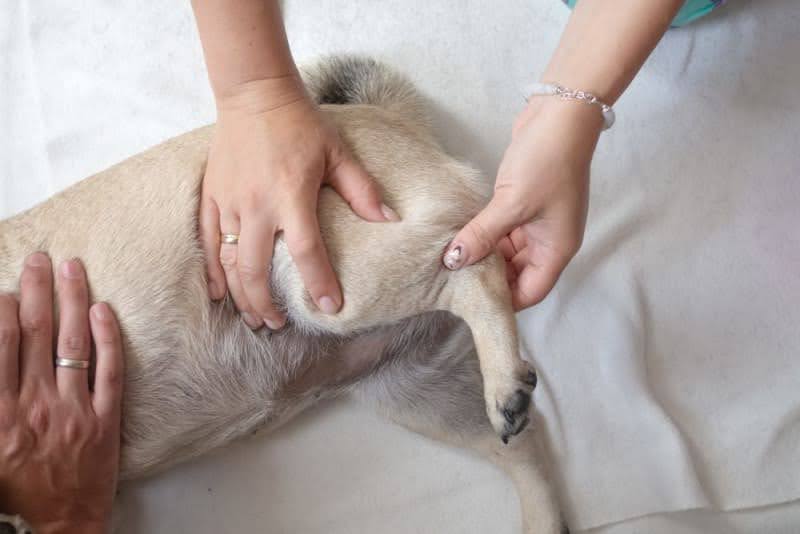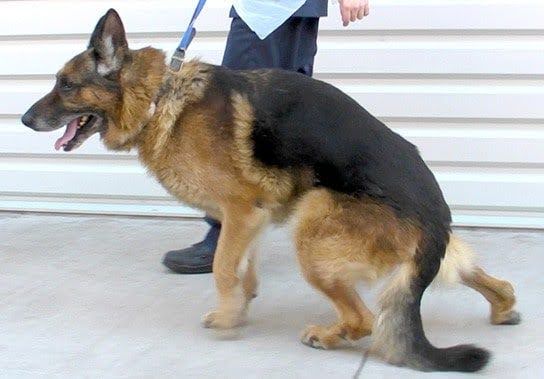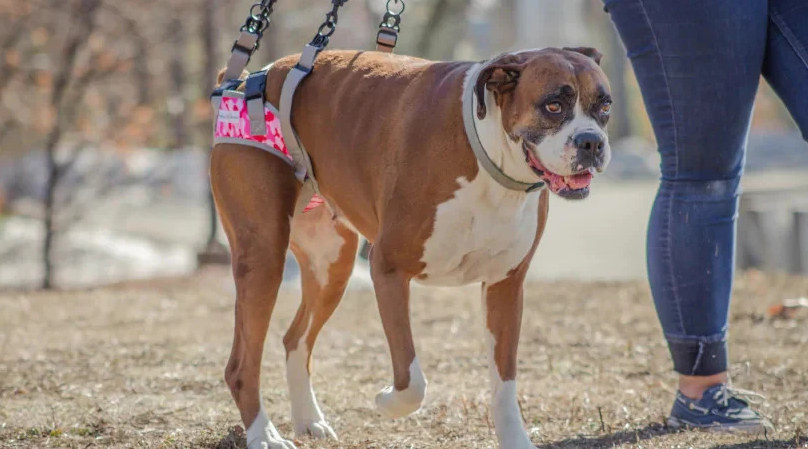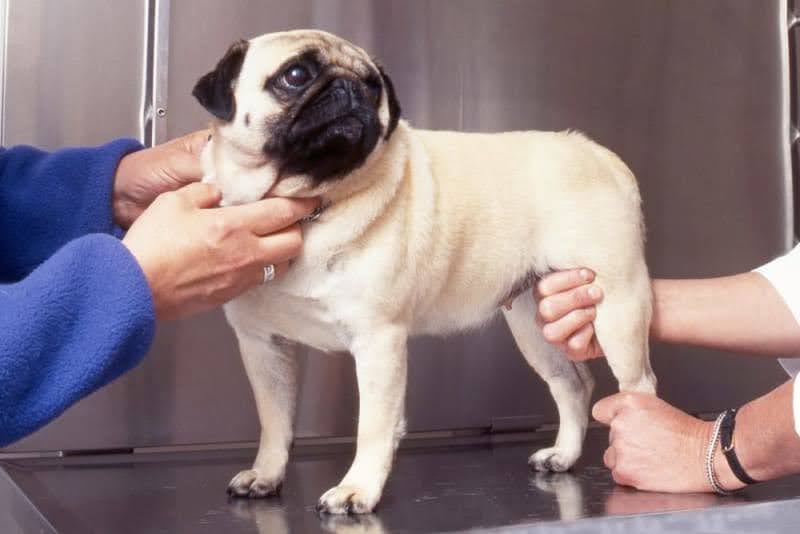TLDR;
Sudden hind leg weakness in dogs can be caused by neurological disorders, musculoskeletal injuries, infections, or age-related degeneration. If your dog suddenly can’t walk or is dragging its back legs, seek veterinary help immediately to determine the root cause and begin treatment.
Your Dog Suddenly Can't Walk? Here's What You Need to Know First

If your dog suddenly can’t stand, is stumbling, or dragging its back legs, it’s not just a clumsy moment. It could be a sign of a serious underlying condition. At Careers Collectiv, while we’re not veterinarians, we help dog owners better understand animal welfare and how to properly care for their pets.
This guide dives deep into what causes sudden hind leg weakness in dogs, how to spot it, how to strengthen hind legs at home, and what you can do next.
How to Recognize Sudden Hind Leg Weakness in Dogs

Early Warning Signs to Watch For
Sometimes, weakness creeps in slowly. But in other cases, it hits out of nowhere. Signs your dog may be experiencing hind leg weakness include:
- Difficulty standing up after lying down
- Hind legs collapsing while walking
- Hesitation or refusal to climb stairs
- Dragging or scuffing of the paws
- Loss of coordination in the back legs
These symptoms may point to “dog weak back legs” or early signs of neurological or joint issues.
Progressive vs. Sudden Onset
- Progressive Weakness: Develops over weeks/months. Often seen in age-related conditions like arthritis or degenerative myelopathy.
- Sudden Onset: Occurs within hours or days. Could be caused by spinal injury, embolism, or poisoning.
If your dog can’t walk suddenly or experiences leg collapse, it may be an emergency.
What Causes Sudden Hind Leg Weakness in Dogs?

This section breaks down the main categories of causes, each with examples and how they present.
Neurological Disorders
Intervertebral Disc Disease (IVDD)
- Disc material pushes against the spinal cord
- Often in dachshunds, beagles, and similar breeds
- Symptoms: Pain, dragging legs, yelping, muscle spasms
Degenerative Myelopathy (DM)
- Progressive spinal cord disease in older dogs (especially German Shepherds)
- Starts with mild hind leg weakness, worsens over time
- No pain, but leads to paralysis
Fibrocartilaginous Embolism (FCE)
- “Spinal stroke”
- Sudden blockage of blood supply to the spinal cord
- Sudden paralysis or weakness, usually on one side
- Often painless, happens after exercise
Musculoskeletal Problems
Arthritis (Osteoarthritis)
- Chronic joint inflammation
- Common in senior dogs or overweight dogs
- Symptoms: Stiffness, limping, reluctance to move
Hip Dysplasia
- Malformed hip joint causes grinding and pain
- Seen in large breeds like Labradors, German Shepherds
- Leads to gradual or sudden mobility issues
Cranial Cruciate Ligament (CCL) Tear
- Similar to ACL injury in humans
- Sudden injury from running, jumping, or playing
- Signs: Limping, unwillingness to bear weight, swelling
Infectious & Systemic Causes
Lyme Disease
- Tick-borne illness
- Causes joint inflammation, fever, lethargy
- Can lead to shifting lameness or leg weakness
Canine Distemper
- Viral disease affecting nervous system
- Often affects unvaccinated puppies
- Signs: Muscle twitching, seizures, paralysis
Tick Paralysis
- Caused by toxins in certain tick saliva
- Weakness begins in hind legs, progresses forward
- Remove tick promptly; recovery usually follows
Metabolic & Toxic Factors
Diabetes
- Long-term high blood sugar can damage nerves
- Leads to muscle weakness and instability
Poison Ingestion
- Rodenticides, insecticides, or heavy metals can cause neurological damage
- Symptoms: Tremors, weakness, collapse, vomiting
Age-Related Degeneration vs Acute Injury
- Age-related: Joint wear and tear, nerve deterioration
Acute injury: Trauma from falls, accidents, or rough play
How Is Hind Leg Weakness Diagnosed in Dogs?

Veterinarians use a range of tools to pinpoint the exact cause. Here’s what to expect:
Neurological Exams
- Reflex testing
- Coordination checks
- Gait assessment
Orthopedic Assessments
- Joint manipulation
- Palpation for swelling or pain
- Muscle strength evaluation
Blood Work & Imaging
- X-rays: Check for fractures or arthritis
- MRI or CT Scan: Evaluate spinal cord and discs
- Blood tests: Rule out infection or toxin exposure
In-Clinic Mobility Observation
- Watching how your dog moves around the clinic
- Tests like “knuckling” response
Treatment for Dog With Weak Back Legs

Treatment depends on the cause, but may include:
Medications
- Anti-inflammatories (NSAIDs)
- Steroids for spinal inflammation
- Pain relief (gabapentin, tramadol)
Surgical Procedures
- For IVDD, CCL tears, or severe hip dysplasia
- Goal: Decompress spine or stabilize joints
Rehab Therapy
- Hydrotherapy: Low-impact water exercise
- Physical therapy: Strengthens muscles, improves range of motion
- Acupuncture: Used in some neurological cases
Canine Mobility Aids
- Dog wheelchairs or carts
- Lifting harnesses
- Non-slip boots
How to Strengthen Dog's Back Legs and Prevent Future Issues

Prevention is key, especially for older dogs or breeds at risk.
Best Exercises to Improve Leg Strength
- Slow leash walks
- Controlled hill walking
- Sit-to-stand repetitions
Nutrition & Joint Supplements
- Omega-3 fatty acids (anti-inflammatory)
- Glucosamine and chondroitin
- High-protein diet for muscle support
Maintaining a Healthy Weight
- Excess weight increases strain on joints
- Monitor food portions
- Avoid excessive treats
Senior Dog Care Tips
- Orthopedic dog beds
- Ramps instead of stairs
- Regular vet check-ups
Home Remedies for Weak Dog Legs

What you can do at home to help immediately:
Supportive Care Checklist
- Limit activity and avoid stairs
- Use a towel or sling to assist walking
- Place rugs on slippery floors
- Offer a firm, padded bed
- Keep water and food easily accessible
FAQs About Sudden Hind Leg Weakness in Dogs
Why can’t my dog suddenly walk on his back legs?
It could be due to spinal issues (like IVDD or FCE), injury, neurological disease, or even poisoning. Sudden inability to walk is a veterinary emergency.
Can a dog recover from sudden leg weakness?
Yes, depending on the cause. Some dogs fully recover with treatment, while others may need long-term care or mobility aids.
Should I take my dog to the vet immediately?
Absolutely. Sudden hind leg weakness in dogs is not normal and should be assessed as soon as possible.
Is it always permanent?
No. Conditions like FCE or a ligament tear may see full recovery. Progressive diseases like DM require management rather than cure.
When to See Veterinary Care for Dog Leg Weakness
If your dog is showing any signs of hind leg weakness, especially if it’s sudden, don’t wait. Time is crucial in diagnosing and treating conditions like spinal injuries or embolisms.
Careers Collectiv is here to help you learn the knowledge and skills to support your dog’s well-being every step of the way.